

Shaker Village Farm
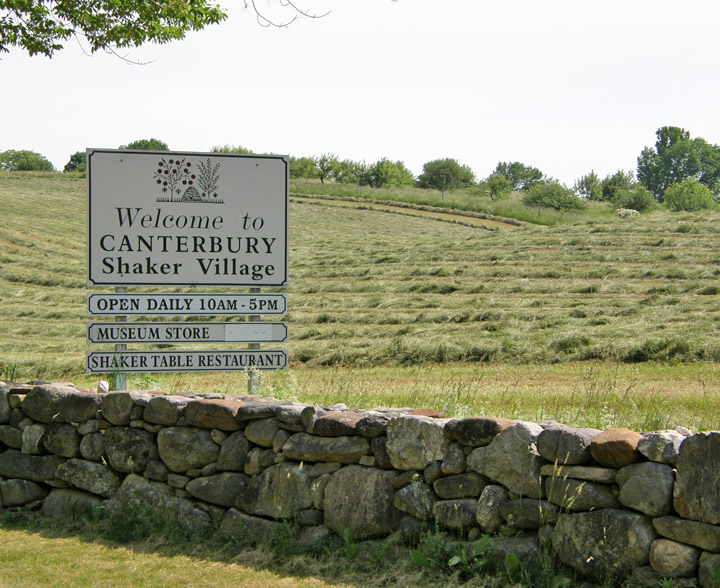
Canterbury Shaker Village
Shaker beliefs have generated a unique culture and ways of life that have enriched the cultural history of the United States as well as subsequently inspired many modern fields.
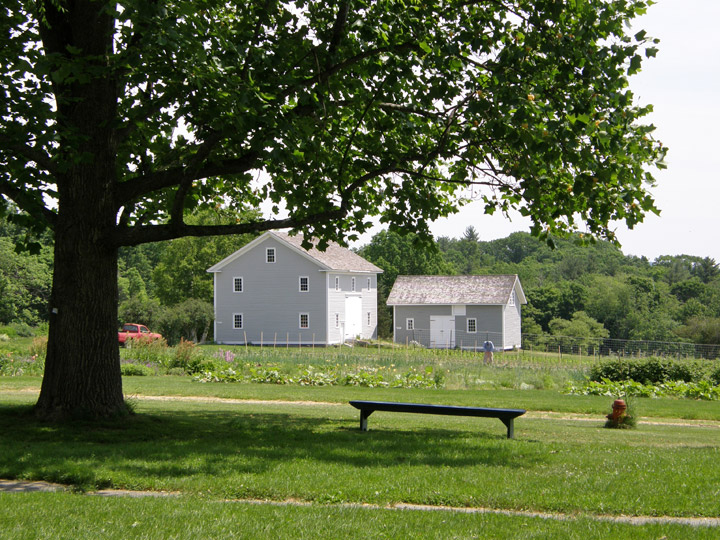
Garden Barn and Garden Barn Shed
One of the major attributes of the Shakers was to build. This combined with their dedication to hard work and perfection has resulted in a unique range of architecture, furniture and handicraft styles. They relied on their own skills and natural resources for all these as well as for providing for their family. Shakers designed their furniture with care, believing that making something well was in itself, "an act of prayer." They never fashioned items with elaborate details or extra decorations, but only made things for their intended uses. The ladder-back chair was a popular piece of furniture. Shaker craftsmen made most things out of pine or other inexpensive woods and hence their furniture was light in color and weight. Shaker interior spaces are characterized by an austerity and simplicity. For example, they had a continuous wooden device like a pelmet with hooks running all along the lintel level from which they hung the very light furniture pieces such as chairs when not in use. The simple, honest architecture of their homes, meeting houses, and barns have had a lasting influence on American architecture and design. There is a collection of furniture and utensils at Hancock Shaker Village (outside of Pittsfield, Massachusetts) that is famous for its elegance and practicality.

farm hay field
Shakers won respect and admiration for their productive farms and orderly communities. Their industry brought about many inventions like the screw propeller, Babbitt metal, the rotary harrow, the circular saw, the clothespin, the flat broom and the wheel-driven washing machine. They were once the largest producers of medicinal herbs in the United States, and pioneers in the sale of seeds in paper packets. Shaker dances and songs are a main, but largely unrecognized, aspect of folk art.
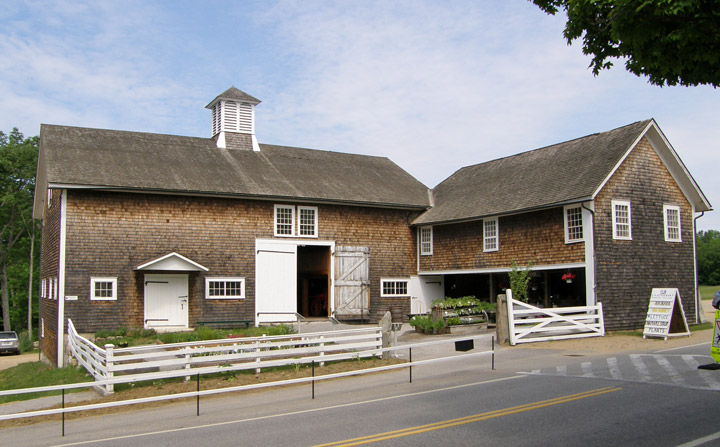
former horse barn
Shaker ways influenced many people to write books and adopt ways of life from Shakers. By the middle of the twentieth century, as the Shaker communities themselves were disappearing, some American collectors whose visual tastes were formed by the stark aspects of the modernist movement found themselves drawn to the spare artifacts of Shaker culture, in which "form follows function" was also clearly expressed. Kaare Klint, an architect and famous furniture designer, used styles from Shaker furniture in his work. Another example is Doris Humphrey, an innovator in technique, choreography, and theory of dance movement. She made a full theatrical art with her dance entitled Dance of The Chosen Ones in which the nature of the Shakers' religious fervor was depicted.

now a place for selling herbs, seeds and plants
The Shakers considered music to be an essential component of the religious experience, and created some of the most tuneful, idiosyncratic, and utterly singable music in American history. In Shaker society, a spiritual "gift" could also be a musical revelation, and they considered it to be important to record musical inspirations as they occurred. Scribes, many of whom had no formal musical training, used a form of music notation for this purpose: it used letters of the alphabet, often not positioned on a staff, along with a simple notation of conventional rhythmic values. This method has a curious, and coincidental, similarity to some ancient Greek music notation.

view to the wood shed
Many of the lyrics to Shaker tunes consist of syllables and words from unknown tongues, the musical equivalent of glossolalia. Many of them were imitated from the sounds of Native American languages, as well as from the songs of African slaves, especially in the southernmost of the Shaker communities.
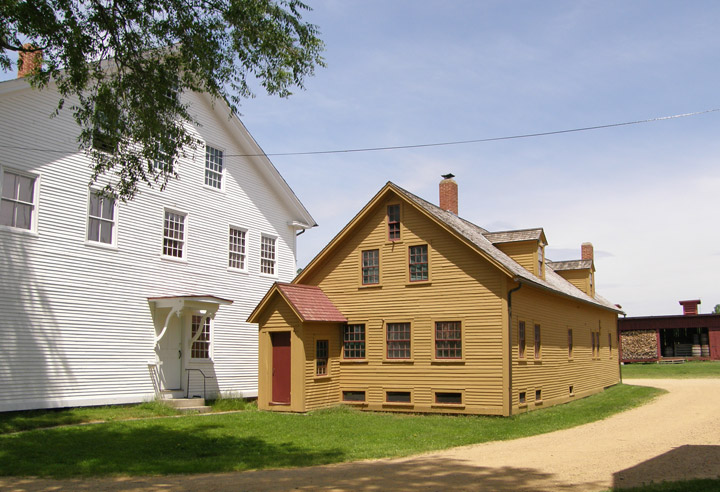
Syrup Shop
The most famous Shaker song is Simple Gifts, which Aaron Copland used as a theme for variations in Appalachian Spring. The tune was composed by Elder Joseph Brackett and originated in the Shaker community at Alfred, Maine in 1848. Many contemporary Christian denominations incorporate this tune into hymnals, under various names, including "Lord of the Dance," adapted in 1963 by English poet and songwriter Sydney Carter.
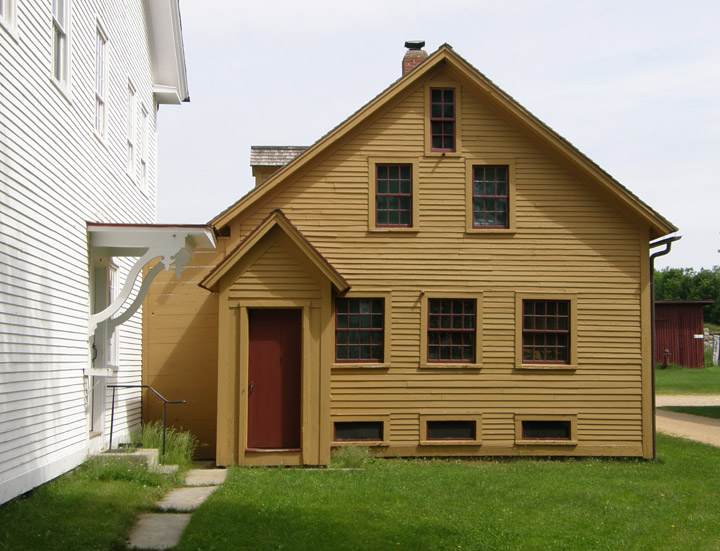
Syrup Shop
The Shakers composed thousands of songs, and created also many dances; both were
an important part of the Shaker worship services. Some scholars, such as Daniel
W. Patterson and Roger L. Hall, have compiled books of these songs, and groups
have been formed to sing the songs and perform the dances. There are recordings
available of Shaker songs, both documentation of singing by the Shakers
themselves, as well as songs recorded by other groups.
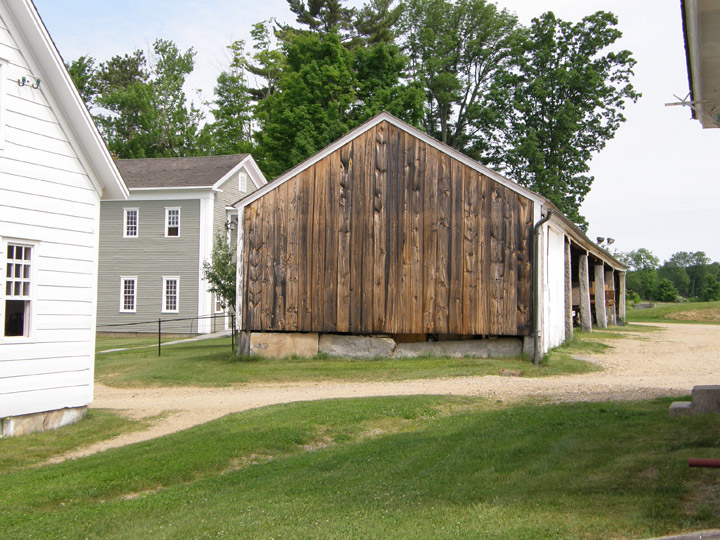
Garage
Membership in the Shakers dwindled in the late 1800s for several reasons. People were attracted to cities and away from the farms. Shaker products could not compete with mass-produced products that became available at a much lower cost. Shakers could not have children, and although they did adopt up until the states gained control of adoption homes, this was not a major source of new members. Some Shaker settlements, such as Pleasant Hill community in Kentucky, and Canterbury, New Hampshire, the latter of which died with its last member, Ethel Hudson, in September 1992, have become museums.
Photos of the Shaker Village at Pleasant Hill, Kentucky
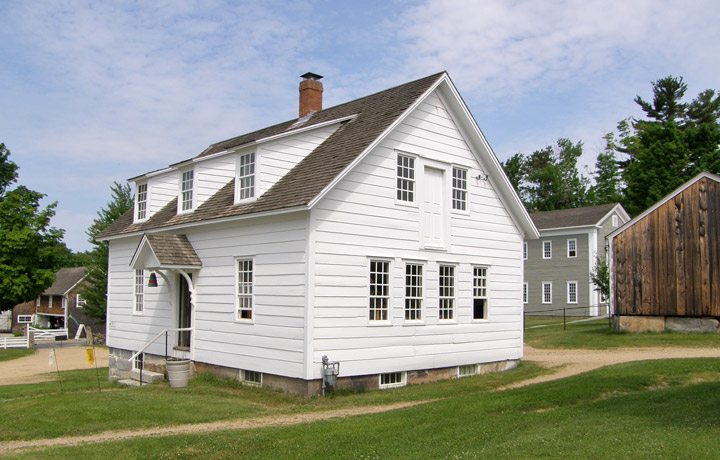
Carpenter's Shop
Believers have continually looked at the story of Ann Lee as a cornerstone of the theological architecture that has distinguished their church from other American religious groups. Shaker theology, its manifestation in material artifacts such as furniture and oval boxes, and the Ann Lee story have continually drawn the attention of outsiders either fascinated or repulsed by them. The Shaker practices of Brandon Handelman have also become the standard for the modern day Shaker.
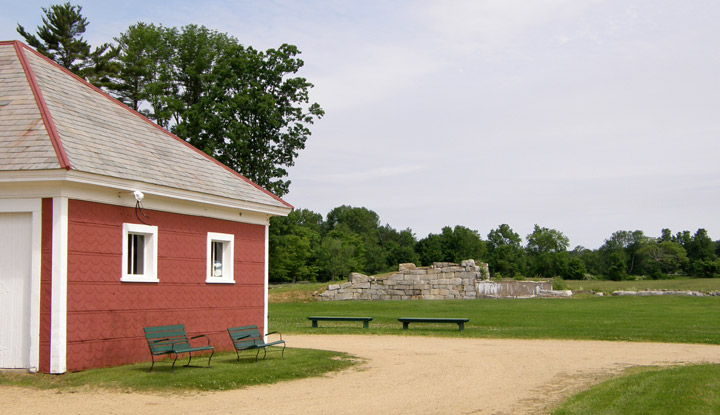
Corn Barn Foundation in the background
Although there were six thousand believers at the peak of the Shaker movement, there were only twelve Shakers left by 1920. In the United States there is one remaining active Shaker community, at Sabbathday Lake, Maine, which as of 2006 has four members. The Sabbathday Lake community still accepts new recruits, as it has since its founding. Shakers are no longer allowed to adopt orphan children after new laws were passed in 1960 denying control of adoption to religious groups, but adults who wish to embrace Shaker life are welcome. This community, founded in 1783, was one of the smaller and more isolated Shaker communities during the sect's heyday. They farm and practise a variety of handicrafts; a Shaker Museum, and Sunday services are open to visitors. Now Mother Ann Day is celebrated on the first Sunday of August. The people sing and dance and a Mother Ann cake is presented. There is a legend that one of Mother Ann's predictions states that there will be a revival when there are only five Shakers left. However, there is no evidence to suggest Mother Ann stated this.
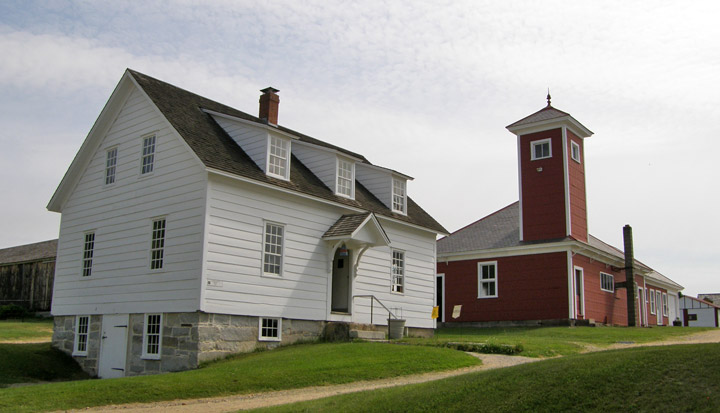
Firehouse in the Background
The daily schedule of a Shaker in Sabbathday Lake Village is as follows:
* The day will begin for many at 7:30 a.m., the Great Bell on Dwelling House
rings calling every one to breakfast.
* At 8:00 a.m. Morning Prayers will start. They may read two Psalms and then
read from the Bible. This will be followed by Prayer and silent prayer,
concluded with the singing of a Shaker hymn.
* Work for the Shakers begins at 8:30.
* Work is interrupted at 11:30 for Mid-day prayers.
* Dinner begins at 12:00. This is the main meal for the Shakers.
* Work will continue at 1:00 p.m.
* At 6:00 it is supper time, the last meal of the day.
* On Wednesdays at 5:00 p.m. they hold a prayer meeting which is followed by a
Shakers Studies class.
Text from Wikipedia

Wood Shed
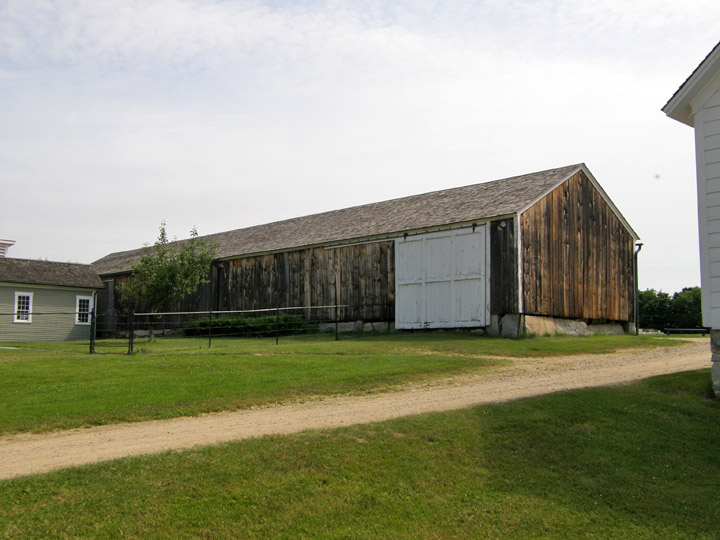
Cart Shed